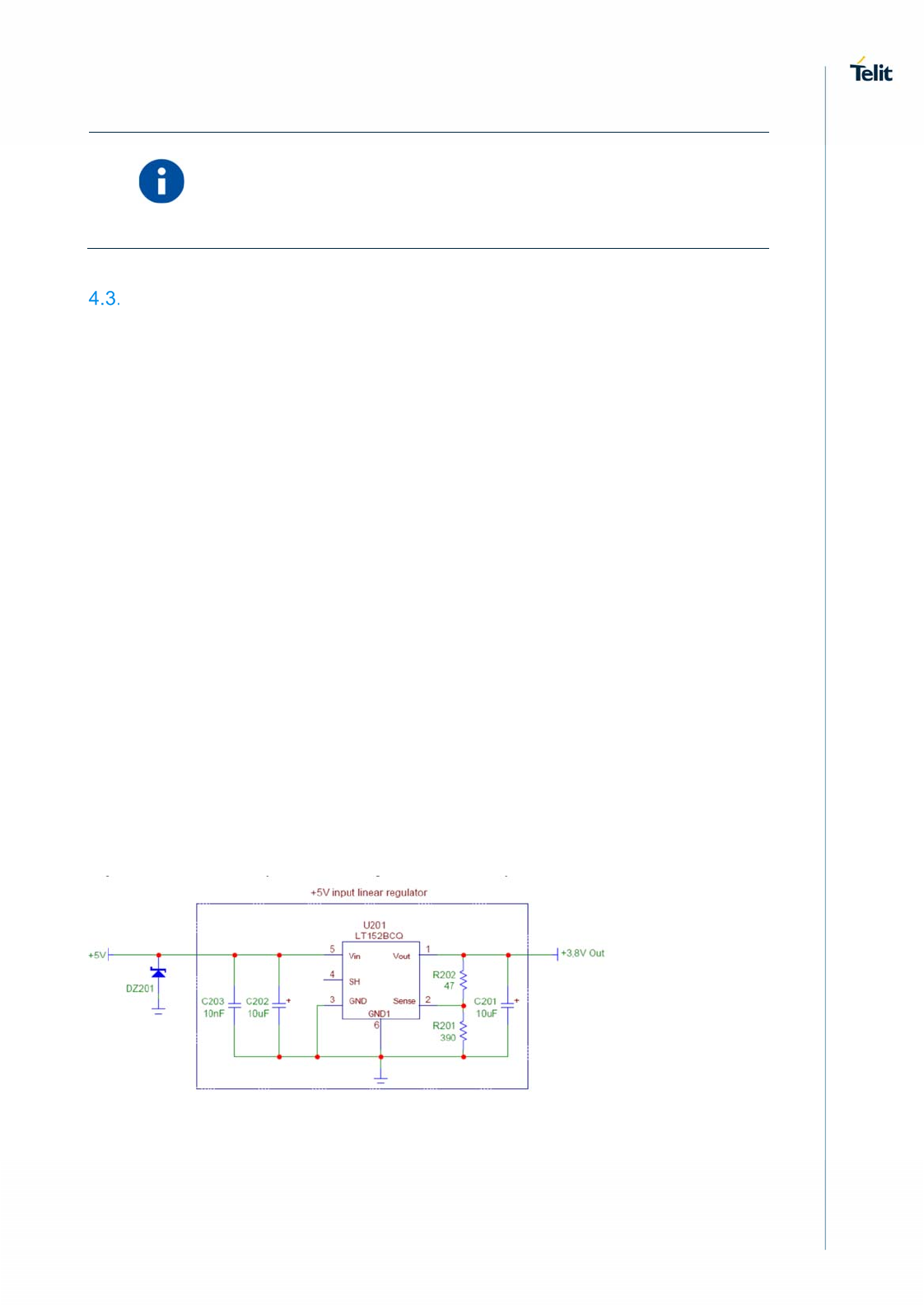User's Guide

LM940 HW Design Guide
1VV0301352 Rev. 2 Page 27 of 68 2017-07-19
Information – The electrical design for the power supply must ensure
a peak current output of at least 2A.
General Design Rules
The principal guidelines for the Power Supply Design embrace three different design
steps:
Electrical design
Thermal design
PCB layout
4.3.1. Electrical Design Guidelines
The electrical design of the power supply depends strongly on the power source where
this power is drained.
4.3.1.1. + 5V Input Source Power Supply – Design Guidelines
The desired output for the power supply is 3.8V. So, the difference between the
input source and the desired output is not big, and therefore a linear regulator can
be used. A switching power supply is preferred to reduce power consumption.
When using a linear regulator, a proper heat sink must be provided to dissipate the
power generated.
A bypass low ESR capacitor of adequate capacity must be provided to cut the
current absorption peaks close to the LE925A4 module. A 100 μF tantalum
capacitor is usually suitable (on both VPH_PWR and VPH_PWR_RF together).
Make sure that the low ESR capacitor on the power supply output (usually a
tantalum one) is rated at least 10V.
A protection diode must be inserted close to the power input to protect the
LE925A4 module from power polarity inversion.
Figure shows an example of linear regulator with 5V input.
4.3.2. Thermal Design Guidelines
The thermal design for the power supply heat sink must be done with the following
specifications:










